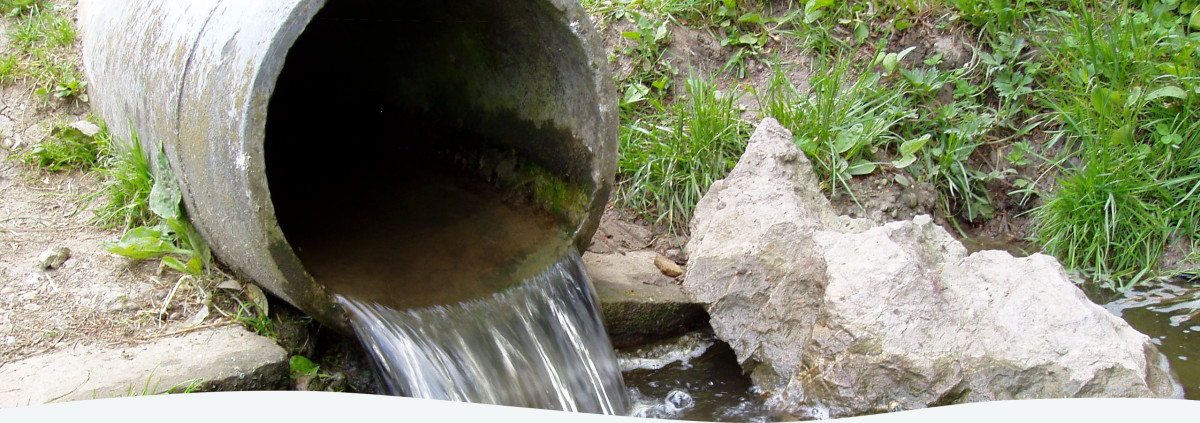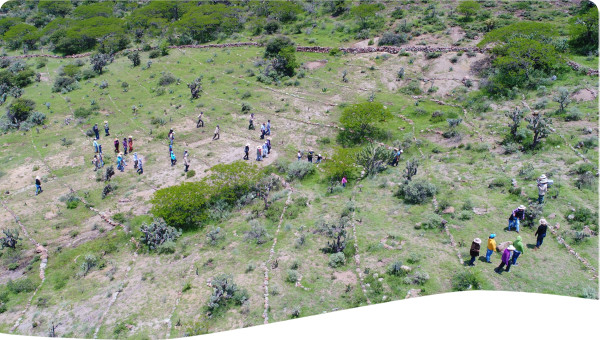The lowland valley of Chancay-Lambayeque watershed is scarce of water resources, forcing farmers to irrigate with insufficiently treated waste water, resulting in severe health issues. Action was taken through the project “Future Development of San José farmer community: Wastewater” which was a collaboration between the private and public sectors, aiming to illustrate alternative ways to irrigate. The most important lesson is that cooperation is an important instrument for development.
The study area, San José/Pampa de Perros' farmer community (1), is located at the lowland valley of Chancay-Lambayeque watershed, one of the four most important watersheds of Lambayeque.
This prairie (pampa in spanish) includes Baldera, Colector and Gallito sectors, and owes its name to the amount of dogs (perros in spanish) that were on the surroundings, looking for waste and corpses brought by the treated waters´ drain emitter of Chiclayo city. It has two differentiated areas: the coast and the mountain range. The first has a regulated irrigation of 98,000 hectares and its water is stored in the reservoir of Tinajones, (230,000,000 m3); rice and sugar cane are cultivated and they consume 89% of water resources, affecting small farmers such as the ones in San José. The other area is the mountain range, where subsistence agriculture depends on rainfall and its waters are poured to Tinajones, located at the coast. Here, 75% of its people are poor and its economy is supported on staple products, cattle ranching and temporary jobs at the coast. There is a coastal vision of the watershed management; the actors at the source of water (the farmers from the mountain range) are ignored. The lowland valley of Chancay-Lambayeque watershed is scarce of water resources. Farmers cultivated their fields with water abstracted from nearby waste water collectors. This source of irrigation was rich in nutrients. However, these practices imposed health risks to local farmers caused be a contamination of food production by insufficiently treated waste water. The situation worsened in the years 1983-84, with cholera epidemic. Authorities took advantage of this opportunity to move local community.
Facing this situation the farmers undertook the struggle for: a) remain in the area, community land, and b) that treated waters were used for agricultural production instead of forestation, as Chiclayo Municipality proposed.
The public institutions (SEDALAM and CORDELAM) started to worry about the misuse of Chiclayo wastewater at Pampa de Perros. The initiative called “Future Development of San José farmer community: Wastewater”, with the participation of public and private sectors started the process of shifting a traditional end-of-pipe solutions towards using the treated wastewater in irrigation of sandy soils for food production. They presented their alternatives and treatment projects were accelerated, which global conception “slept” in public sector. The debate was focused on promoting the treatment, but waters would be used for agriculture and not for forestation as the Municipality proposed. Several years' process comprised of the development of technical design of lagoons and stakeholder dialogues.
The important component of the initiative was to convince both local farmers and authorities about an alternatives showing that reuse of waste water brings both environmental and economic benefits. Finally, the project was successful to receive funds for the implementation.
Governmental policy promotes mainly the extensive irrigation of desertic areas, which only benefits large investments for export, such as the case of Chavi Mochic in Trujillo, and Olmos in Lambayeque. Likewise, there is no strategy to have an integral watershed approach on the urban water resources management, because this space -the city- is part of a natural watershed, and it is influenced and it influences on the quantity and quality of the wastewater irrigation resource and the sustainability of the system.
As today, 8 pools were built to irrigate 250 to 350 hectare of soil and support food production of local community. Farmers manage water efficiently for agricultural production: livestock, pasture and milk production, organised communally. San José farmers’ community has been organised in 5 Local Administration Commitees (CDL); Baldera, Colector and Gallito, are organized in Committees; its decisions on water management are under the responsibility of each of them. This organisation allows that decisions on water management, on communal management and other resources are decentralized. The organisation form keeps communal integrity, despite some limitations on water management and distribution, and property transfer to the interior of communal territory; control and vigilance are “more alive”; control to water distributors can be done immediately.
On the other hand, the CDL also promotes product merchandising by organising in associations for different activities. At present, the farmers' community is part of the Association of Ecological Producers, a second level agency. Finally, organisational capacity has also led them to develop its agreement capacity with different actors operating in the area; organisational consistency was the key to that mobilisation was successful to achieve that treated waters are used for agricultural production.
The use of city wastewater is outside the local and regional government policies; its reuse is not a common practice. Nevertheless, they are potential water resources for agricultural development, in an area with water scarcity for irrigation.
Cooperation is an important instrument for development because there is a learning process on how to negotiate among diverse actors. The rationalization of human and financial resources leads to a better and larger attention to users.
The social, economic and environmental impacts produced by the organized management and the efficient use of treated waters by farmers, shows a rural alternative of small production in their hands.
A public policy linked to farmers' practices could facilitate the inclusion of that wastewater to agriculture, without the requirement of large treatment systems.
 Case studies
Case studies
